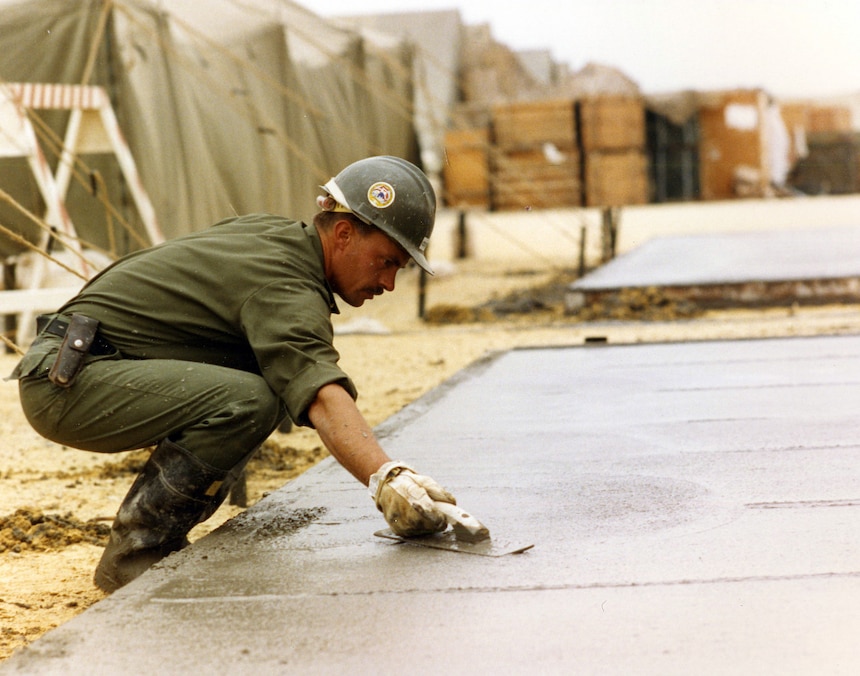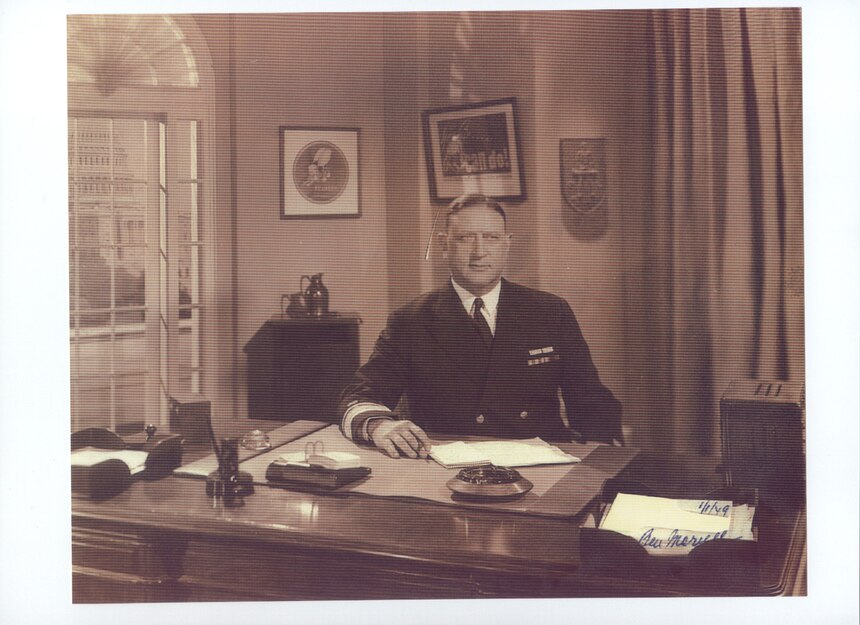Consolidated by U.S. Navy Seabee Museum, Naval History and Heritage Command
January 1
1946: The Advance Base Depot, Naval Construction Training Center (NCTC), Davisville, Rhode Island is inactivated. Concurrently, the Naval Supply Depot, Newport, Davisville Annex was established. Also, the 1st Naval Construction Regiment (NCR) was inactivated.
1959: The homeport of Naval Mobile Construction Battalion (NMCB) 10 was officially changed from Guam, Marianas Islands to Port Hueneme, California.
1967: NMCB 4 s advance party departed Port Hueneme, California for Da Nang, Republic of Vietnam (RVN).
1968: Seabee Team 0602 graduated from Seabee Team Training and was assigned to Officer in Charge, Construction Battalions, Pacific Detachment, RVN, deploying to Phouc Le, RVN.
1968: Seabee Team 0511 redeployed to Go Dau Ha Village, RVN.
1972: Seabee Team 7411 deployed to Tan An, RVN.
January 2
1942: Manila and Cavite, Philippines, fell to the Japanese.
1946: 141st Naval Construction Battalion (NCB) inactivated at Kwajalein Atoll.
Early January
1991: U.S. Marines began to move north in preparation for the expected ground assault on the Iraqis. In support of this, the Seabees began to concentrate on building and maintaining roads to serve as the main supply routes throughout northern Saudi Arabia.
After months of constructing millions of square feet of aircraft aprons, camps for tens of thousands of Marines, and hundreds of acres of ammunition and supply points, the Seabees prepared to support the ground assault into Kuwait. NMCB 5 moved half its strength to Al Kabrit, 30 miles from the Kuwaiti border, and began construction of a Naval Construction Force Logistics Support Base from which the Seabees could provide the First Marine Expeditionary Force the construction support needed during the upcoming assault into Kuwait. The top construction priorities during this period were water, roads, and facilities for the Marine division assembly areas. Water was obtained by exploiting already-existing wells, and the Seabees built galley facilities for the 30,000 Marines of the 1st and 2nd Marine Divisions. A 40,000 man capacity enemy prisoner of war camp was also built.

The most formidable task facing the Seabees was the road network required by General Schwarzkopf's "End Run" attack strategy. Spanning more than 30 miles of desert from Al Mishab to Al-Kabrit, the "End Run" strategy ultimately required more than 200 miles of roads west and north of the Kuwaiti border. Because of the need to deceive the Iraqis, much of the construction necessary had to be done at the last minute. Working in the wettest weather seen in Saudi Arabia in years, Seabees completed the necessary construction in approximately two weeks. Thousands of trucks moved million of gallons of water and fuel, and tons of supplies, ammunition and spare parts on this road network to support the two Marine divisions making the assault. By the time the assault was launched, Seabees were maintaining approximately 200 miles of roads near the Kuwaiti border. One of these roads was an east-west corridor from Ras Al Mishab through Al Kabrit, continuing past Al Qaraah for a total distance of almost 100 miles. This six-lane road was traversed daily by more than 500 heavy haulers and thousands of tactical vehicles.
January 3
1943: 61st NCB commissioned at Camp Peary, Magruder, Virginia.
1944: ACORN 18 arrived at Espiritu Santo. 10th NCR inactivated. (In World War II, Navy ACORN units, composed of Seabees and other components such as aircraft maintenance units, etc., were put together to design, construct, operate and maintain forward landplane and seaplane bases and operational facilities.)
1968: Detail Bravo One of NMCB 7 departed for Hoi An, RVN to begin construction work at the Cords Hospital.
1973: A small team of Navy Seabees went to earthquake-riddled Managua in Nicaragua. Their task was to recover as much as possible of the classified equipment and materials buried in the rubble of what was once the United States Embassy. The four-man team from the State Department s Naval Support Unit in Washington, D.C. made quick work of what was originally estimated to be a three-to-four week job. Within nine days, all of the equipment had been retrieved. Upon completion of that mission, the team then retrieved the major portion of the remaining office furniture and equipment from the wreckage. Following the work at the embassy, at the request of the wife of the Nicaraguan President, the Navy Construction Team proceeded to Managua s El Retiro Hospital for a similar job. The Seabees immediately employed their technical expertise and equipment to recover the valuable operating room and surgical gear from the ruins of the big hospital. Recovery of this equipment not only saved the hospital substantial money, but also enabled the hospital to be used in the much needed medical treatment of the earthquake victims. The team departed from Nicaragua on January 18th. Use of this team provided another example of the varied talents of the Seabees, who are almost as well known for their humanitarian accomplishments as their combat construction feats.
January 4
1968: Equipment Operator 1st Class H.C. Cousineau was killed when struck by enemy fire while riding in a helicopter north of Tan Ky, RVN.
January 5
1942: The Bureau of Navigation (now the Naval Personnel Command) approved Admiral Ben Moreell s request for authority to recruit skilled craftsmen and artisans to man a Naval Construction Force. The original authorization was for a Naval Construction Regiment composed of three Naval Construction Battalions. This approval, in effect, was the actual beginning of the Seabees. Authorizations for additional battalions soon followed in rapid sequence.

1943: ACORN 3 arrived at New Caledonia.
January 6
1945: A Seabee whose unit was attached to a Marine Division doubled as a combat pilot during the invasion and battle for Cape Gloucester, New Britain. Machinist's Mate 1st Class Chester J. Perkins of NCB 19 flew a total of 218 hours, 105 of them during combat as the pilot of a light, unarmed reconnaissance plane. He made daily flights over enemy territory to transport rations and supplies to isolated jungle patrols and to spot for artillery batteries. In addition, Perkins carried blood plasmas to Marines wounded during the invasion operations and dropped medical supplies while fighting was still in progress. Perkins operated mostly from crude, improvised landing strips, usually roadways and sand bars. On one occasion, a fusillade of enemy bullets pierced the cabin floor of his tiny plane. Fortunately, all of them missed him. For his outstanding accomplishments, Perkins was awarded the Navy Air Medal on Jan. 6, 1945.
1967: The first aircraft of the advance party of NMCB 133 arrived in RVN.
1968: The first advance party of eight officers and 137 Seabees of NMCB 8 departed the continental United States (CONUS) via C-130 aircraft for deployment to RVN.
1970: 21st NCR Detail Yankee (of UCT 1) departed Davisville, Rhode Island and deployed to Atlantic Undersea Test and Evaluation Center (AUTEC) for test emplacement of the Project AFAR array.
January 7
1946: Last section of 38th NCB inactivates at Yokosuka, Japan; 17th Special NCB inactivated on Leyte, Philippines.
1970: Seabee Team 0410 returned to Construction Battalion Center (CBC), Port Hueneme, California from Vietnam.